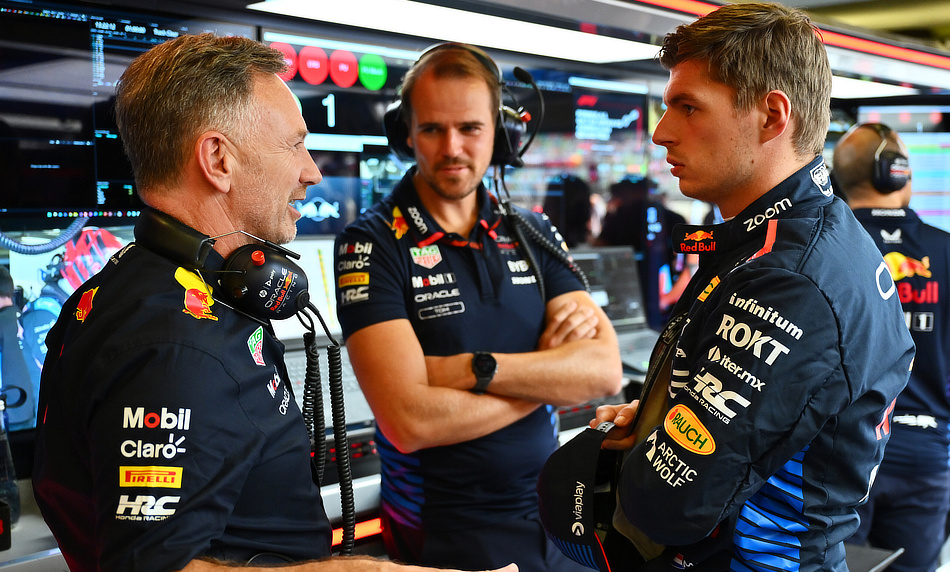By James Broughton, October 25, 2024
Red Bull Racing is in the spotlight amid allegations that it is bending the rules. The focus of these suspicions is the so-called “bib,” an aerodynamic component located beneath the front of an F1 car, just behind the rear axle where the front section of the plank attachment begins. Engineers often refer to the bib as the “T-tray” or front splitter. In road cars, the front splitter improves handling and stability at high speeds.
The same principles of stability and handling apply to the F1 bib, T-tray, or front splitter. In Formula 1, however, the bib is adjustable, and all teams make modifications to it. Adjusting the bib affects the car’s ride height, which in turn impacts aerodynamics by increasing or reducing drag. F1 rules dictate that access to the car is strictly prohibited after qualifying, per Parc Fermé regulations.
Nonetheless, suspicions surround Red Bull’s bib. Many in the paddock believe Red Bull is making adjustments to the bib during Parc Fermé, which would violate regulations. Red Bull has denied these allegations, and the FIA investigated, finding no evidence of rule-breaking after Red Bull demonstrated how they adjust the front bib settings within the allowed regulations.
No Evidence
Red Bull argues that accessing the front bib requires disassembling the car. However, few in the F1 paddock believe these claims, and suspicions intensified when the FIA placed a seal over Red Bull’s bib adjustment component—a tacit indication that the FIA may have its own theory about potential rule-bending.
To date, no evidence has surfaced to suggest that Red Bull has violated any bib adjustment regulations. However, this does not necessarily mean Red Bull has adhered strictly to the letter of the law. In Formula 1, discovering loopholes that push the boundaries is common. Every team flirts with the edge of the regulations, though some are more adept at it than others.
Passively Activated Bib?
My theory is that Red Bull has developed a passively activated bib; in other words, Red Bull may have engineered a way to independently adjust the bib mechanically, possibly dictated by fuel loads. For example, when the car carries more fuel, the ride height increases, and as the fuel is consumed during a race, the ride height gradually decreases.
If such a device exists, it would likely involve a complex gear mechanism and some form of mechanical or electromechanical level sensor to activate adjustments in the bib’s ride height—possibly using an advanced float gauge system.
Suspicious Minds
Rival teams in the F1 paddock are calling for a thorough investigation, despite the FIA no longer pursuing Red Bull over their front bib design. While no evidence suggests that Red Bull has cheated, that does not necessarily mean they haven’t.



